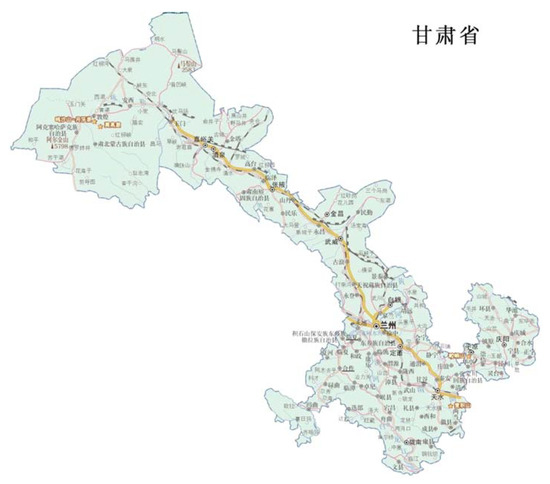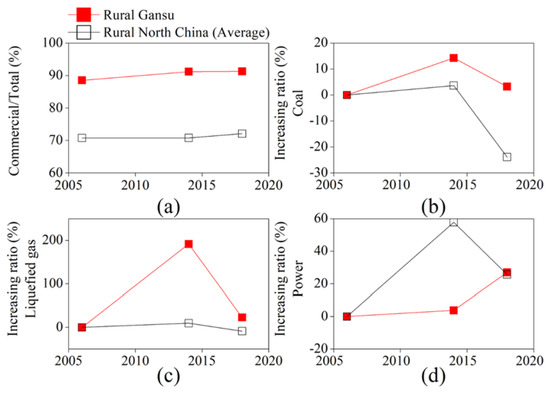1000/1000
Hot
Most Recent

Rural clean heating project (RCHP) in China aims to increase flexibility in the rural energy system, enhance the integration of renewable energy and distributed generation, and reduce environmental impact.
After the first two-decade development in the 21st century, many countries in the world regard “harmonious development between human and nature” as the key of state construction in the next stage, especially after the COVID-19 disaster [1][2][3][4][5]. Particularly, the developed countries in Europe put “renewable energy evolution based new-age industrial revolution” into their national development programs [6][7][8][9][10].
In China, people are confronted with three challenges and/or opportunities: the scientific and technological revolution, the energy revolution, and the ecological revolution. Based on the “development-improvement” experience by western world, Chinese people adopt a sustainable development strategy in building a conservation-minded society (CMS) [11][12][13][14][15].
Energy saving is an important part of CMS, and building energy saving (BES) is the substantial portion [16][17][18]. Therefore, BES as a national strategic support is in line with the scientific development law.
Through long-term, active, and extensive participation of the whole society, China has made an extraordinary progress in three major sectors of urban residential energy saving, public building energy saving, and central heating system energy saving in the north. However, rural China, being the key rear area supporting China’s reform and opening-up, faces many challenges from the clean heating project [17][18].
Since 2005, the characteristics of rural housing energy consumption and its composition have undergone profound changes with the promotion of New Rural Construction (NRC (The detailed information about NRC can be taken on http://qgxnc.org/, accessed on 3 February 2021)) and the improvement in peasant farmer’s living standards. The most conspicuous variation is rural energy-use structure. Over the past 20 years, the consumption of commodity energy in rural China has been increasing year by year. Meanwhile the consumption of non-commodity energy (biomass energy, especially) has been decreasing [17][18].Furthermore, the total energy consumption in rural areas continues to rise, although the resident population (composed mainly of old people, young children, and school-age children (More information on rural China can be gotten on http://www.gov.cn/, accessed on 3 February 2021)) in rural China continues to decline in the meantime, which means that the rural energy-use intensity tends to grow all the time.
On the one hand, increased rural energy demand may indicate the improvement in peasant farmer’s living conditions. On the other hand, the lower proportion of renewable energy in rural energy consumption is very worrying, since it works against the low-carbon development path advocated by the government. Therefore, the key to transform energy use in rural China lies in structural optimization of energy use and increase in renewable proportion [18].
Field research shows that the crucial domestic terminals of rural energy use consist of heating, cooking (including domestic hot water), and electricity consumption for household electric appliances and lighting. Among them, wastage from heating accounts for 53.6% and even more than 60% of waste in some areas in rural China [17][18]. Thus, the rural clean heating project (RCHP) is of great significance to the evolution of CMS in China.
Information on the current state of Gansu Province can be found on http://www.gansu.gov.cn/col/col10/index.html, accessed on 3 February 2021. Gansu Province (Figure 1 (Gansu Province map can also be found on http://www.gansu.gov.cn/col/col10/index.html, accessed on 3 February 2021.)) is the provincial administrative region of the People’s Republic of China, and its capital is Lanzhou. It is located in the west of China, in the middle and upper reaches of the Yellow River, with a vast area (more than 1600 km winding from the east to the west, with a total area of 425,900 km2, accounting for 4.72% of China’s total area). There are complex terrains, crisscross mountains, and great differences in altitude. Meanwhile, there are rich mineral resources, wind resources, hydro-power resources, and solar energy resources. The province has a variety of climate types and abundant wildlife. As the birthplace of ancient Chinese civilisation, it has contributed extremely important history and culture to the world.

Figure 1. Gansu Province map. Note: This map is provided by http://www.gansu.gov.cn/col/col10/index.html, accessed on 3 February 2021.
However, as obvious as the above advantages are, its natural ecology is fragile, the economic development is lagging behind, and the living standard of peasant farmers is low (e.g., the per capita GDP ranking of Gansu Province in China is 31/31 (http://www.gov.cn/shuju/chaxun/index.htm, accessed on 3 February 2021.)). Hence, determining how to carry out RCHP in the complex human and geographical environment, while taking into account the regional political and economic characteristics, is the core of RCHP in rural Gansu.
Table 1 details the annual consumptions of diverse energy resources in rural Gansu [17][18]. Figure 2 depicts the commercial energy consumption in a comparison with the north average [17][18]. It can be found in Table 1 that the total annual energy consumption in rural Gansu is lower than that in the north average, which implies that the peasant farmers’ living standard in rural Gansu is lower than that in northern rural China. Fortunately, this living-standard gap has been narrowed since 2006.

Figure 2. Commercial energy consumption in rural Gansu; (a) the percentage of commercial energy consumption to total energy consumption; (b) the increasing ratio of coal consumption; (c) the increasing ratio of liquid gas consumption; (d) the increasing ratio of power consumption; Note: The complete data can be found in References [17][18].
Table 1. Annual consumptions of diverse energy resources in rural Gansu.
| Year | Name | Unit | Value | Average | Deviation |
|---|---|---|---|---|---|
| 2006 | Total building area | 108 m2 | 3.4 | 5.3 | −35.8% |
| Coal | 104 t | 779 | 1018.9 | −23.5% | |
| Liquefied gas | 104 t | 1.2 | 13.5 | −91.1% | |
| Power | 108 kWh | 15.7 | 29.4 | −46.6% | |
| Firewood | 104 t | 55 | 287.6 | −80.9% | |
| Crop straw | 104 t | 92 | 357.1 | −74.2% | |
| Commercial energy | 104 tec | 610 | 849.4 | −28.2% | |
| Non−Com. energy | 104 tec | 79 | 348.4 | −77.3% | |
| Sum | 104 tec | 689 | 1200.5 | −42.6% | |
| 2014 | Total building area | 108 m2 | 3.7 | 5.9 | −37.3% |
| Coal | 104 t | 890 | 1056.1 | −15.7% | |
| Liquefied gas | 104 t | 3.5 | 14.8 | −76.4% | |
| Power | 108 kWh | 16.3 | 46.4 | −64.9% | |
| Firewood | 104 t | 45 | 329.7 | −86.4% | |
| Crop straw | 104 t | 80 | 352.9 | −77.3% | |
| Commercial energy | 104 tec | 695 | 928.1 | −25.1% | |
| Non−Com. energy | 104 tec | 67 | 383.1 | −82.5% | |
| Sum | 104 tec | 762 | 1311.1 | −41.9% | |
| 2018 | Total building area | 108 m2 | 3.4 | 5.3 | −35.8% |
| Coal | 104 t | 918.8 | 803.6 | 14.3% | |
| Liquefied gas | 104 t | 4.3 | 13.5 | −68.1% | |
| Power | 108 kWh | 20.7 | 58.3 | −64.5% | |
| Firewood | 104 t | 46.5 | 265.5 | −82.5% | |
| Crop straw | 104 t | 82.6 | 315.5 | −73.8% | |
| Commercial energy | 104 tec | 723.6 | 818.5 | −11.6% | |
| Non−Com. energy | 104 tec | 69 | 317.1 | −78.2% | |
| Sum | 104 tec | 792.6 | 1135.5 | −30.2% |
Note: the commercial energy mentioned in this table includes coal, liquefied gas, and power electricity; the non-commercial energy (Non-Com.) includes firewood and crop straw. The source of data in Table 1 is Reference [17], National Bureau of Statistics of China. China Statistical Yearbook. http://www.stats.gov.cn/tjsj/ndsj/; accessed on 3 February 2021.
On the other hand, in terms of annual commercial energy consumption, its proportion in total energy use in rural Gansu is dramatically higher than that in north average, and this percentage still increases (Figure 2a). Although the coal consumption in the northern rural China has been dropped since 2014, the peasant farmers living in rural Gansu tend to consume more (Figure 2b). The liquefied-gas consumption shows a similar trend in past years as Figure 2c depicts. By contrast, the increasing rate of power consumption in rural Gansu is accelerating, which is contrary to the slowing-down tendency in the northern rural China (Figure 2d) [17][18].
Based on the other studies we can understand that there is a significant gap between energy-use demand and energy supply in rural Gansu, and there is a great divergence between its energy structure and the sustainability goals of China [11][12][13][14][15][16]. Furthermore, the contradictions existing in the peasant farmers’ living conditions and their health targets are obvious [18]. In particular, the indoor air temperatures in rural Gansu are generally low with cold air infiltration, and the indoor air quality is poor caused by coal combustion [18].